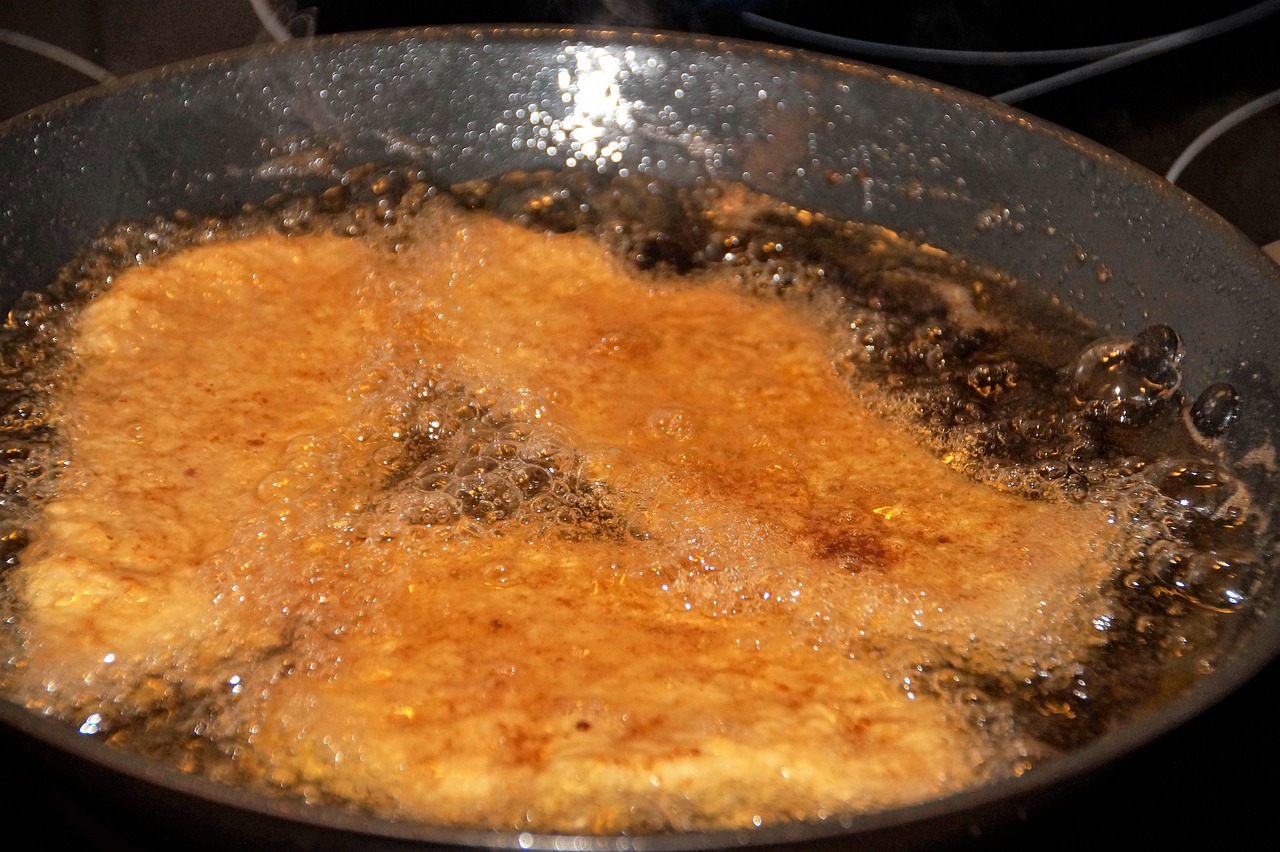Elevating your cooking often involves learning new cooking techniques and upgrading your kitchen’s arsenal. That means you will likely be investing in new cookware, like the wok.
Like the Dutch oven and sauté pan, the traditional pow wok or the more modern flat-bottomed, enameled wok is versatile in the kitchen and can be used for various tasks. The big question is – how can you deep fry with a wok? Let’s find out.
Can You Deep Fry in Wok?
The traditional, hand-hammered wok is excellent for deep-frying food. Artisans designed this cookware’s shape to handle large quantities of food without reducing the quality of the cooking. Like other classic cookware, woks evolved so they can be used for different scenarios.
While the pow wok’s high walls can handle large quantities of ingredients at a time, the narrow and round base of the wok is also a pleasure to work with when you need to cook a small number of components quickly thoroughly. This is the basis of stir-frying, and woks are well-loved in Chinese cooking because they work so well no matter the situation.
The first benefit of cooking with a wok will always be the heat distribution. The high heat conductivity of the wok is an essential advantage in the kitchen. When you have high heat conductivity and an even spread of heat, metal hotspots can be avoided.
Hotspots are areas on the pan that are overheated and can easily cause the burning of the food. It doesn’t matter much to beginners, but when you start getting into the technique of cooking, heat distribution plays a huge role in getting recipes right. If the pan’s bottom is constantly overheated, it’s possible to burn your food even if your fire is turned up to low.
The second benefit of using a wok is reduced oil splatter. While anyone can avoid the splatters, splatters can easily mess up a kitchen, and the cleanup after can be tiresome.
The walls of a wok are much higher than ordinary sauté pans, frying pans, and skillets. Since deep frying requires much more oil than usual, the splatters will be more frequent, and there’s going to be more bubbles and oil to deal with. You can’t cover a pot or pan while deep-frying as this will lock in the moisture that will prevent the proper caramelization of the food.
The third benefit is the shape of the wok. Woks have a gently rounded body that allows you to move food in and out with absolute ease.
It is often more difficult to remove from a flat-bottomed type of cookware because the pan’s items are crowded, and you have to manually lift the food from the center to the waiting serving plate. It’s different with the wok.
With the wok, you can pick the piece that you want to remove and slide it upward until it falls onto the serving plate. You don’t have to lift the food; you slide it – the wok will help you remove the food.
The fourth benefit is the cookware’s capacity.
Woks are the undisputed champions of food capacity in the kitchen. They’re huge. They have a wider surface area for food. This means you can deep-fry much higher quantities of food, and you can expect the same results each time because of the even heat distribution.
If you don’t like cooking in batches, get the enormous wok you can and use that for cooking. And if you are constantly cooking for large groups of people, here’s our take – get a big wok and buy a commercial, stand-alone burner and connect it to your gas line.
Stand-alone burners have three or four rings with their controls, and you can control the size of the flame by turning the small levers. These commercial burners are very common in Asia, and they are designed to handle much larger pots and woks with ease.
Can You Deep Fry in A Nonstick Wok?
While it’s technically possible, experts do not recommend deep-frying in nonstick woks.
The enameled coating used on ordinary nonstick woks is not designed to withstand long cooking periods at high temperatures. Eventually, the deep-frying will damage the coating and strip the nonstick wok of its nonstick layer.
Nonstick woks are best for low to medium temperatures while cooking, with just the correct oil and ingredients. If you want to deep-fry constantly, you need a traditional wok with a much higher capacity and a rounded bottom.
Which Metal Is Good for Deep Frying?
The best metals for deep-frying are those that have high conductivity and retain heat well, so the buildup of heat is excellent over time, and the food will eventually cook evenly. The best examples of metals for deep frying are stainless steel, aluminum, and cast iron.
Cast iron is famous throughout the western world because it is the go-to for cooking steaks and other meats. Elsewhere, aluminum frying pans and skillets and pans and skillets made of stainless steel do just fine.
The thickness of the metal also has an impact on the effectiveness of the cookware. The thicker the cookware, the better the heat retention, though the heat buildup may take some time.
That’s why some pots and pans have a combination of stainless-steel walls and anodized, heavy-gauge aluminum for the bottom because aluminum conducts heat the best, while stainless steel is unmatched when it comes to durability.
What about cast-iron skillets? Cast iron is well-known for its durability and ability to cook the meat consistently all the way through.
Cast iron’s heat retention is excellent, and it is the best for cooking nice and juicy steaks. If you don’t mind maintaining cast iron by seasoning it, there is no reason why you shouldn’t add a cast iron skillet to your kitchen’s arsenal.

